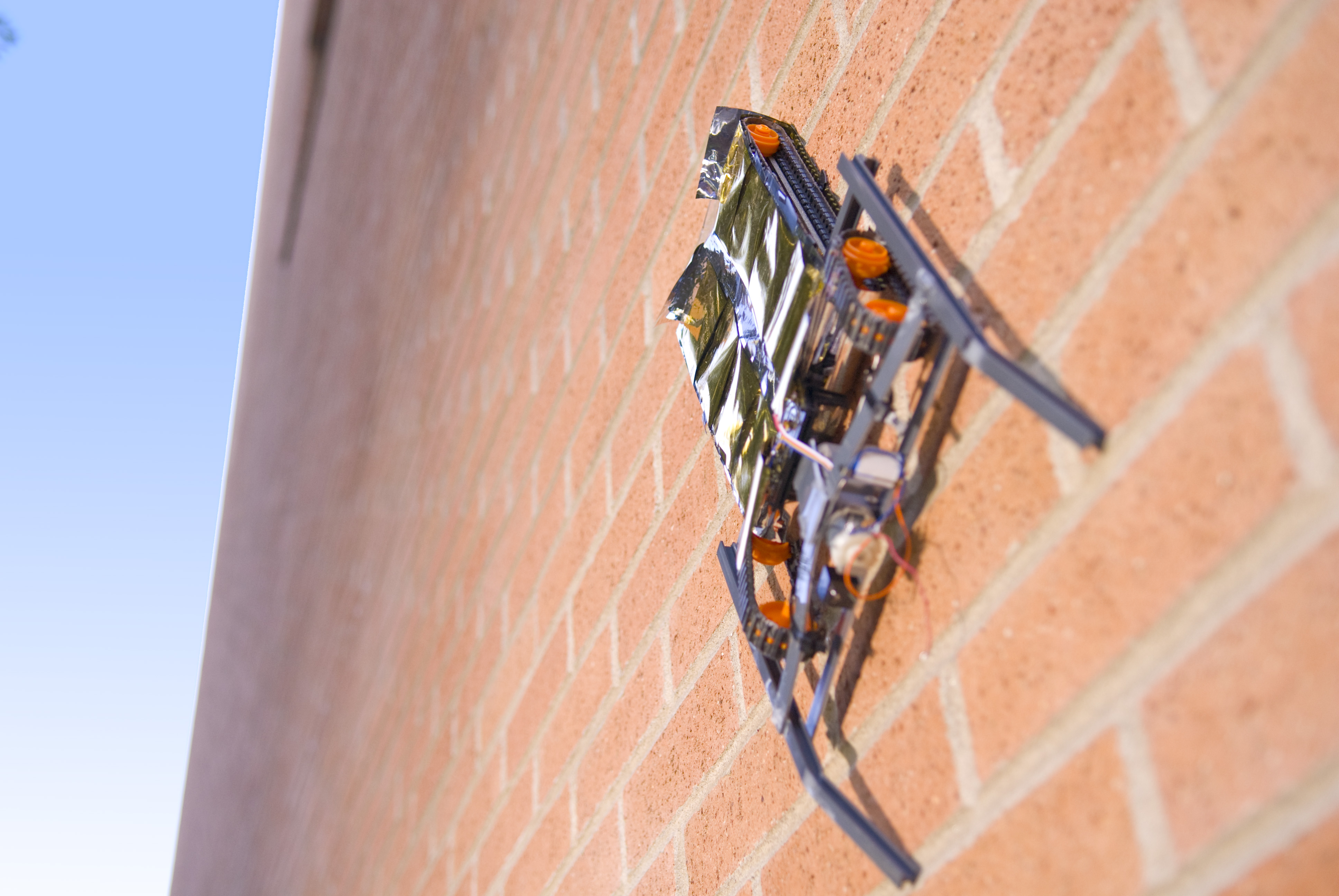Robots are becoming more and more important in war zones, disaster areas, and in every day life, in order to view places people cant access easily or safely. At the moment flying robots can't last for very long because they use so much power, and ground based robots are constrained to fairly flat surfaces.
 Various groups have tried to make wall climbing robots based on suction pads, or reusable gecko adhesive, but none of them work on loose surfaces. Researchers from SRI international have invented a really elegant way to make robots climb walls, using the same principle as how you can rub a balloon on your hair and then stick a balloon to a wall.
Various groups have tried to make wall climbing robots based on suction pads, or reusable gecko adhesive, but none of them work on loose surfaces. Researchers from SRI international have invented a really elegant way to make robots climb walls, using the same principle as how you can rub a balloon on your hair and then stick a balloon to a wall.
This works by a process called electro-adhesion, the balloon sticks because when you rub it, you build up a large negative charge. When this is near the wall, the part of the wall close to the balloon will become positive and attract the balloon, this attraction is large enough for friction to hold it up. But on a conducting wall the charge will escape and the balloon will fall off quickly.
Harsh Prahlad and collegues have built a robot on the same principle, it has a series of electrodes insulated form the wall by a thin layer of flexible rubber. The robot charges up these electrodes to several thousand volts which then attract the wall in the same way as the balloon, and because the electrodes are insulated it will work on metal surfaces as well.
The robot will climb walls which are dusty, and can support between 20 and 140g per square cm of clamping area. But the researchers are still working on walls that are wet, as unfortunately the robot sticks to the water rather better than the wall...!










Comments
Add a comment